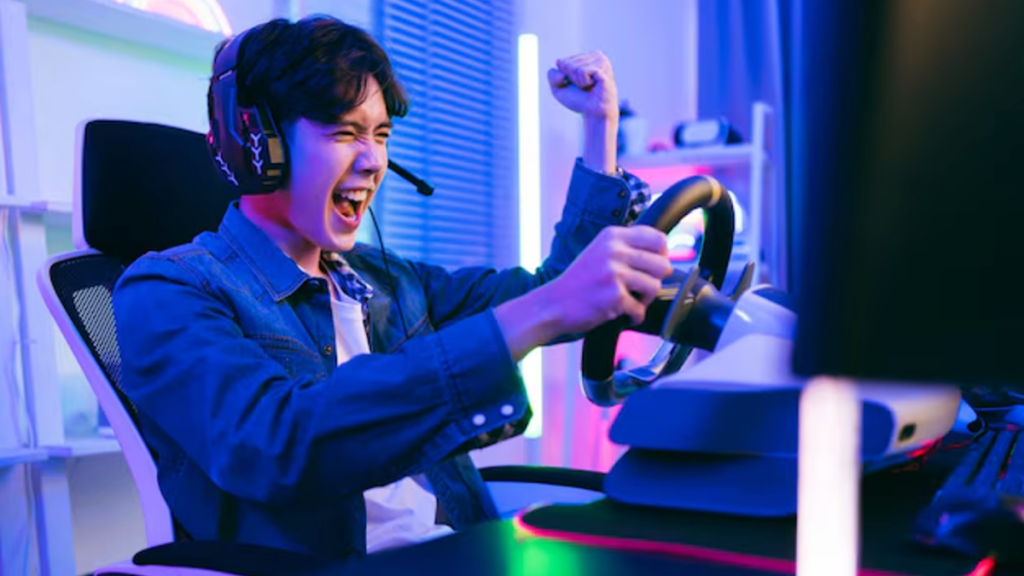Slot games have come a long way from their humble beginnings. The machines that once featured simple designs and mechanical reels have now evolved into digital masterpieces. While the mechanics and RTP (Return to Player) are key factors in a slot game’s success, it’s the design that plays a huge role in attracting players and keeping them engaged.
Let’s dive into why design is the core of slot game success and how it shapes the overall player experience.
Why Slot Game Design Matters
When we think about slot games, the first things that come to mind are often the visuals and the aesthetic appeal. But there’s so much more that goes into creating an engaging experience for players. Slot game design is more than just about looking good—it’s about crafting an atmosphere that enhances the gameplay and immerses players in the experience.
The Impact of Visuals on Player Engagement
The visual design of a slot game is the first thing that catches a player’s attention. Bright colors, intriguing animations, and detailed symbols all work together to create a dynamic visual experience. But it’s not just about looking pretty—it’s about keeping players interested. Games with visually engaging designs tend to draw in more players, and a well-crafted game can make the difference between a player spinning the reels for a few minutes or staying hooked for hours.
Consider the role of themes in slot games. Whether it’s an Egyptian adventure, an ancient treasure hunt, or a futuristic space odyssey, themes help set the tone and pull players into different worlds. The designs support these themes by featuring symbols, characters, and animations that bring the story to life. This seamless integration of design and theme creates a much more enjoyable experience, keeping players coming back for more.
The Role of Sound and Animation in Creating Atmosphere
It’s not just about how the game looks; it’s also about how it sounds and feels. Sound design plays a critical role in slot games, providing auditory cues that add to the excitement of the game through RTP live. The chime of a jackpot win, the sound of the reels spinning, and the background music all work together to enhance the player’s experience. When paired with top-notch animation, these elements create a more immersive environment that keeps players engaged for longer periods.
Animation is another crucial aspect of slot game design. Animations help bring the game’s theme to life and provide visual feedback for every spin. Think about the thrill of watching symbols stack up, triggering a bonus round, or seeing a reel full of wilds. These dynamic animations not only entertain but also help players feel more connected to the game’s progression, making each spin feel more exciting.
Designing for User Experience (UX)
While flashy visuals and animations are important, the design of a slot game must also focus on the user experience (UX). This is where things get a bit more technical. A game with an intuitive layout and easy-to-navigate interface ensures that players don’t get frustrated while trying to place bets or trigger special features.
A well-designed slot game should be user-friendly, with buttons and controls that are clearly labeled and easy to access. A confusing interface or a difficult-to-understand paytable can quickly turn players away, especially newcomers who might not be familiar with the game mechanics. Simplicity and clarity are key elements of good UX design.
Responsiveness and Mobile Optimization
With mobile gaming becoming increasingly popular, ensuring that a slot game is optimized for different devices is essential. The responsiveness of a slot game refers to how well it adapts to various screen sizes and operating systems. Whether a player is spinning the reels on a desktop, tablet, or smartphone, the game should look and function equally well across all devices.
The key to a successful mobile slot game design is making sure the game runs smoothly without compromising on graphics or gameplay features. A responsive design enhances the overall experience, ensuring players enjoy seamless play on any device.
The Balance of Art and Mechanics
Great slot game design is all about finding a balance between artistic elements and gameplay mechanics. The visuals, animations, sounds, and user interface should complement the core mechanics, including the paylines, wilds, and bonus features. The design needs to enhance these elements, providing a cohesive experience that flows naturally.
For example, a bonus round might be triggered by landing a specific combination of symbols. The visual effects and animations that accompany this event should amplify the excitement of winning, making the players feel like they’ve just unlocked something special. This balance is critical in creating a game that not only looks great but also delivers a rewarding and engaging experience.
Conclusion
In the world of slot games, design is everything. It’s not just about how a game looks; it’s about creating an immersive experience that draws players in, keeps them engaged, and makes them want to play again. From visuals and sound design to user experience (UX) and mobile optimization, every aspect of design plays a crucial role in the game’s success. The next time you sit down to spin the reels remember that behind every great game is a team of designers working hard to craft the perfect blend of style and substance. Whether you’re in it for the big wins or simply enjoying the ride, great design is at the heart of it all.
So, next time you choose a slot game, consider the design behind it—it might just be the key to a more enjoyable, rewarding gaming experience.




